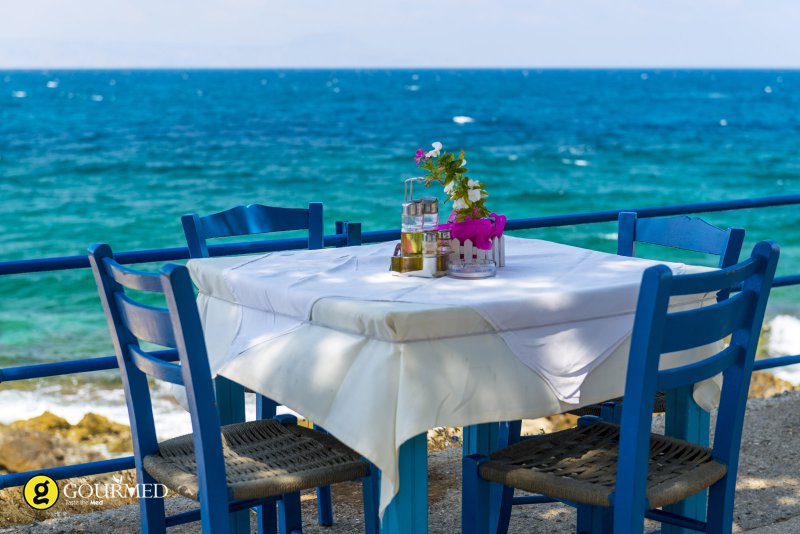Enter any taverna or cafenio in Greece, and you see neatly arranged square tables with four chairs.
This seems logical until you realize that these chairs are not for four people, since nobody uses only one chair.
Two people sit down, immediately pull over two more chairs, and get comfortable. Arms, feet and bottoms are settled in, using the extra chairs to accommodate all parts.
If it is a taverna and they start to order, we realize that the waiter has dragged another table over, the first one already covered with cell phones, cigarettes, worry beads and keys. Water, bread and wine are quickly brought over; there is no way the first table could have handled all of this.
When the food arrives, including starters, dips, toasted bread and salads, the second table starts to groan.
A friend stops by for a drink, two new chairs appear. I dread to think what is in store for the table when the meal arrives; another table dragged over?
In Greece the lowly, square, 1m x 1m table is probably enough for one person for coffee, water, sugar bowl, personal belongings and so on.
Nevertheless, this almost never occurs, since eating or even drinking coffee alone never seems to happen.
Why does a country, like Greece, produce so many uncomfortable chairs, and these miniscule tables?
This remains a mystery to me. It seems like an opportunity for some Greek innovator to develop a comfortable chair, as well as a larger table. Perhaps there is some obscure law that prevents this.
Yet it really would be a shame if this does ever change; part of Greece's charm is its uncomfortable chairs and tiny tables, and waiters reorganizing the entire interior of a restaurant, just to accommodate three customers.



































































